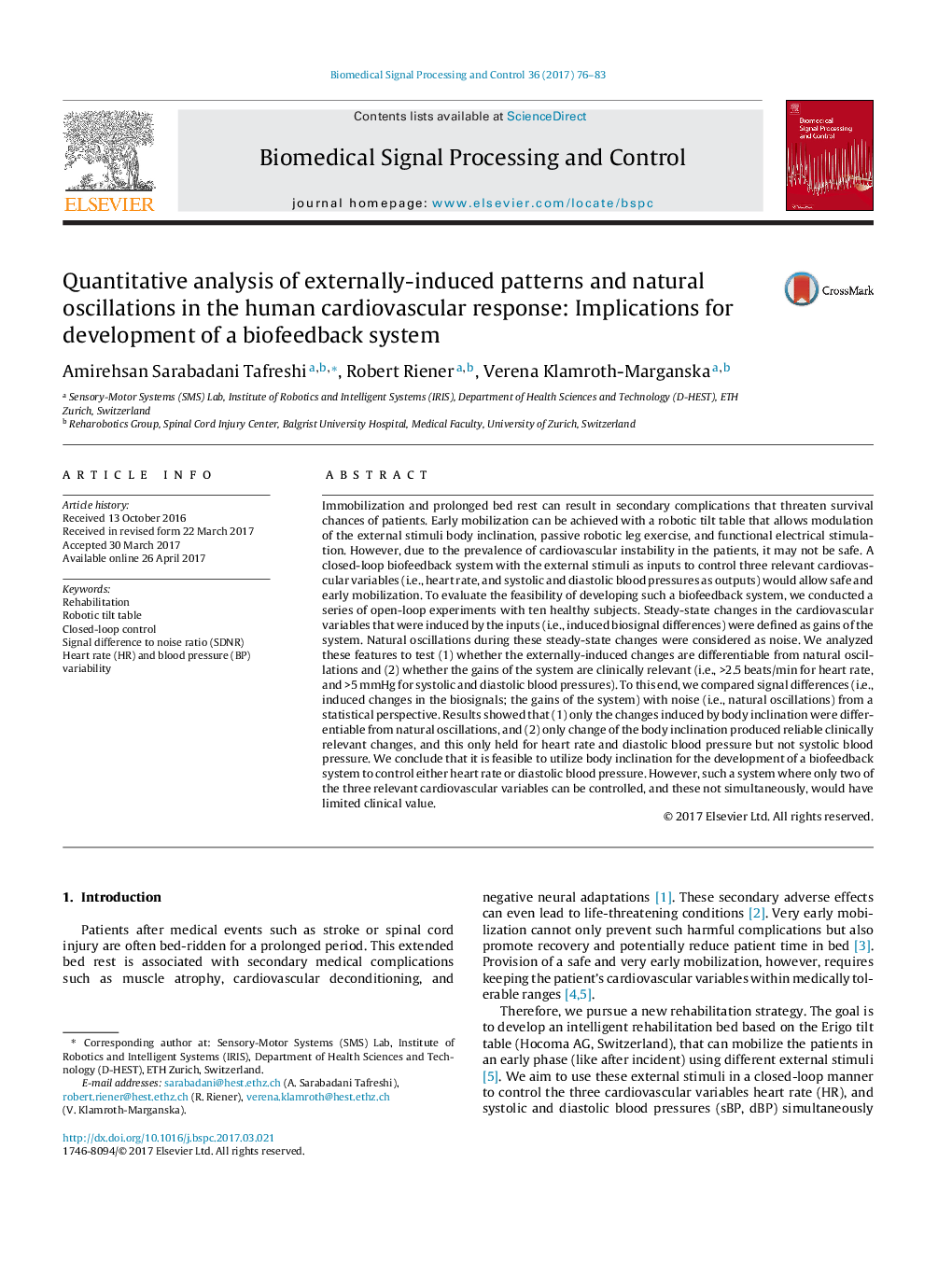| Article ID | Journal | Published Year | Pages | File Type |
|---|---|---|---|---|
| 4973536 | Biomedical Signal Processing and Control | 2017 | 8 Pages |
Abstract
Immobilization and prolonged bed rest can result in secondary complications that threaten survival chances of patients. Early mobilization can be achieved with a robotic tilt table that allows modulation of the external stimuli body inclination, passive robotic leg exercise, and functional electrical stimulation. However, due to the prevalence of cardiovascular instability in the patients, it may not be safe. A closed-loop biofeedback system with the external stimuli as inputs to control three relevant cardiovascular variables (i.e., heart rate, and systolic and diastolic blood pressures as outputs) would allow safe and early mobilization. To evaluate the feasibility of developing such a biofeedback system, we conducted a series of open-loop experiments with ten healthy subjects. Steady-state changes in the cardiovascular variables that were induced by the inputs (i.e., induced biosignal differences) were defined as gains of the system. Natural oscillations during these steady-state changes were considered as noise. We analyzed these features to test (1) whether the externally-induced changes are differentiable from natural oscillations and (2) whether the gains of the system are clinically relevant (i.e., >2.5Â beats/min for heart rate, and >5Â mmHg for systolic and diastolic blood pressures). To this end, we compared signal differences (i.e., induced changes in the biosignals; the gains of the system) with noise (i.e., natural oscillations) from a statistical perspective. Results showed that (1) only the changes induced by body inclination were differentiable from natural oscillations, and (2) only change of the body inclination produced reliable clinically relevant changes, and this only held for heart rate and diastolic blood pressure but not systolic blood pressure. We conclude that it is feasible to utilize body inclination for the development of a biofeedback system to control either heart rate or diastolic blood pressure. However, such a system where only two of the three relevant cardiovascular variables can be controlled, and these not simultaneously, would have limited clinical value.
Keywords
Related Topics
Physical Sciences and Engineering
Computer Science
Signal Processing
Authors
Amirehsan Sarabadani Tafreshi, Robert Riener, Verena Klamroth-Marganska,
